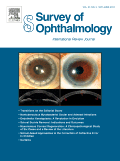
SURVEY OF OPHTHALMOLOGY
Scope & Guideline
Exploring Innovations in Vision Health
Introduction
Aims and Scopes
- Clinical and Surgical Ophthalmology:
The journal emphasizes studies and reviews that delve into surgical techniques, clinical management strategies, and outcomes for various ophthalmic conditions, including cataracts, glaucoma, and retinal diseases. - Pathophysiology of Ocular Diseases:
A significant focus is placed on understanding the underlying mechanisms of ocular diseases, such as age-related macular degeneration, diabetic retinopathy, and uveitis, contributing to improved diagnostic and therapeutic approaches. - Innovations in Ophthalmic Technology:
The journal consistently features advancements in imaging technologies, surgical instruments, and therapeutic devices, reflecting its commitment to promoting innovative solutions in ophthalmology. - Artificial Intelligence in Ophthalmology:
A unique contribution of the journal is its exploration of artificial intelligence applications in ophthalmology, including diagnostic algorithms and imaging analysis, which are increasingly relevant in modern clinical practice. - Patient-Centered Outcomes and Quality of Life:
The journal also addresses the importance of patient-reported outcomes and quality of life assessments in managing ocular diseases, emphasizing a holistic approach to eye care.
Trending and Emerging
- Artificial Intelligence and Machine Learning Applications:
The increasing incorporation of AI and machine learning in diagnostic processes and treatment planning represents a significant trend, highlighting the need for research in this area to improve patient outcomes. - Integrative Approaches to Eye Health:
There is a notable trend toward integrating systemic health factors, such as nutrition and systemic diseases, into the understanding and management of ocular conditions, emphasizing a holistic approach to eye care. - Advancements in Gene and Cell Therapy:
Emerging research on gene and cell therapies for inherited retinal diseases and other ocular conditions signifies a shift towards innovative treatment modalities that promise to revolutionize ophthalmic care. - Telemedicine and Remote Patient Monitoring:
The COVID-19 pandemic has accelerated interest in telemedicine solutions for eye care, with a focus on remote monitoring and consultations, reflecting a significant trend in adapting to patient needs. - Patient-Centric Research:
There is a growing emphasis on understanding patient perspectives, experiences, and outcomes, demonstrating a shift towards more patient-centered research methodologies in ophthalmology.
Declining or Waning
- Traditional Pharmacological Treatments:
There appears to be a waning interest in conventional pharmacological treatments for ocular diseases, as the focus has shifted towards innovative therapies, including gene therapy and biologics. - Basic Science Research:
While foundational science remains important, there has been a noticeable decrease in publications focusing solely on basic laboratory research, as the field moves towards translational and clinical applications. - Non-Surgical Interventions for Common Conditions:
The exploration of non-surgical management options for prevalent conditions like dry eye disease and minor refractive errors has diminished, possibly overshadowed by advances in surgical techniques and technologies.
Similar Journals
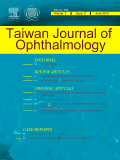
Taiwan Journal of Ophthalmology
Fostering global collaboration for better vision outcomes.Taiwan Journal of Ophthalmology is a premier open-access publication dedicated to advancing the field of ophthalmology. Published by Wolters Kluwer Medknow Publications, this journal has been a vital resource for researchers, practitioners, and students since its inception in 2012. With an ISSN of 2211-5056 and an E-ISSN of 2211-5072, it provides a platform for sharing innovative research, clinical findings, and reviews pertinent to eye health and vision science. The journal is indexed in Scopus and currently holds a Q3 quartile ranking within the ophthalmology category, reflecting its commitment to quality and relevance in the medical community. Located in Mumbai, India, Taiwans Journal of Ophthalmology aims to foster discussions and disseminate knowledge that promotes better understanding and treatment of ocular diseases, ensuring that the latest advancements reach a global audience. By embracing open-access policies, the journal underscores its dedication to making valuable insights readily available to all interested parties, thus contributing significantly to the discourse in ophthalmic research.
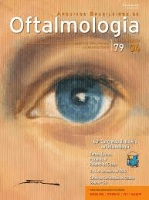
ARQUIVOS BRASILEIROS DE OFTALMOLOGIA
Advancing knowledge in eye health and innovation.ARQUIVOS BRASILEIROS DE OFTALMOLOGIA is a prominent peer-reviewed journal dedicated to the field of ophthalmology, published by CONSEL BRASIL OFTALMOLOGIA since its inception in 1945. With its commitment to disseminating high-quality research, the journal has transitioned to an Open Access model since 2001, ensuring that vital findings in ophthalmology are freely available to researchers, clinicians, and students alike. Located in São Paulo, Brazil, this esteemed publication occupies a significant position in the medical field, currently holding a Q3 ranking in both the miscellaneous medicine and ophthalmology categories. Although it maintains a legacy of fluctuating impact, recognized for its contribution to the academic community, ARQUIVOS BRASILEIROS DE OFTALMOLOGIA continues to attract a diverse international readership, making it a valuable resource for advancements in eye health, surgical techniques, and ocular research.
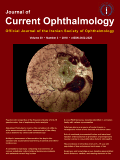
Journal of Current Ophthalmology
Bridging Research and Practice: Enhancing Eye Health TogetherJournal of Current Ophthalmology is a premier scholarly platform dedicated to advancing the field of ophthalmology, published by Wolters Kluwer Medknow Publications. Established as an Open Access journal since 2015, it aims to provide unrestricted access to high-quality research that fosters knowledge sharing and collaboration among researchers, practitioners, and students in the field. The journal covers a broad spectrum of topics within ophthalmology, from clinical practices to groundbreaking research, contributing significantly to the medical community's understanding of eye health and diseases. With an impact factor reflecting its significance, it ranks in the Q2 category of ophthalmology and stands at #66 out of 137 in Scopus rankings, placing it in the 52nd percentile of its field as of 2023. The Journal of Current Ophthalmology is committed to publishing cutting-edge findings and innovative solutions, establishing itself as an essential resource for all professionals engaged in ocular research and care.
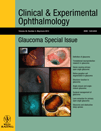
CLINICAL AND EXPERIMENTAL OPHTHALMOLOGY
Illuminating Innovations in OphthalmologyCLINICAL AND EXPERIMENTAL OPHTHALMOLOGY is a leading peer-reviewed journal published by Wiley, renowned for its commitment to advancing the field of ophthalmology. With an impressive impact factor reflecting its high-quality research contributions, this journal is ranked in the Q1 category both in Medicine (miscellaneous) and Ophthalmology, signifying its crucial role in shaping contemporary ophthalmic research. It boasts a remarkable position in the Scopus Ranks, standing at Rank #13 out of 137 in the field of Medicine and Ophthalmology, placing it within the 90th percentile among its peers. Having been in circulation since 1979, this journal encompasses a broad scope of topics that aim to disseminate groundbreaking findings and stimulate dialogue among researchers, clinicians, and students alike. It is easily accessible to a global audience, embodying the principles of open access, making valuable research available to all. For anyone seeking to stay at the forefront of ophthalmology, CLINICAL AND EXPERIMENTAL OPHTHALMOLOGY is an indispensable resource that fosters knowledge and innovation in the ever-evolving landscape of eye care.
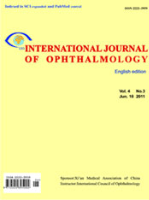
International Journal of Ophthalmology
Advancing Vision Through Innovative ResearchThe International Journal of Ophthalmology, with ISSN 2222-3959 and E-ISSN 2227-4898, is a premier open-access publication dedicated to advancing the field of ophthalmology. Published by IJO PRESS in China, this journal has been a valuable resource since its inception in 2005, providing a platform for groundbreaking research and clinical studies in ophthalmic science. With an impressive Q2 ranking in the 2023 Ophthalmology category and a Scopus rank of #65 out of 137, the journal consistently showcases high-quality articles that contribute significantly to the understanding and treatment of eye diseases. Since adopting an open-access model in 2010, it has expanded its reach, allowing researchers, professionals, and students worldwide to access vital knowledge in the field. The journal aims to bridge the gap between laboratory research and clinical practice, making it an essential resource for those committed to improving visual health and advancing ophthalmologic education and innovation.

Ophthalmology and Therapy
Empowering Professionals with Cutting-Edge InsightsOphthalmology and Therapy is a premier open-access journal published by Springer International Publishing AG, dedicated to advancing the field of ophthalmology through innovative research and clinical studies. With an ISSN of 2193-8245 and an E-ISSN of 2193-6528, this journal serves as a vital resource for researchers, healthcare professionals, and students interested in the latest developments in eye care and vision science. The journal has achieved a remarkable impact factor and has been recognized as a Q1 journal in Ophthalmology, reflecting its contributions to the discipline and its high-quality publications. Operating from the United Kingdom, Ophthalmology and Therapy is an open-access platform that has been available since 2012, ensuring that critical research is accessible to a global audience. Its commitment to fostering collaboration and knowledge sharing is exemplified by its ranking of #39 out of 137 in the Scopus category for Medicine – Ophthalmology, placing it in the 71st percentile of its peers. Together, these attributes highlight the journal's importance as a key forum for the dissemination of cutting-edge research, making it an essential addition to the libraries of institutions and professionals engaged in ophthalmic care.
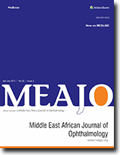
Middle East African Journal of Ophthalmology
Championing excellence in eye care and research.The Middle East African Journal of Ophthalmology is a distinguished publication dedicated to advancing knowledge in the field of ophthalmology, published by Wolters Kluwer Medknow Publications in India. With a robust focus on contributions that bridge the gap between clinical practices and scientific research, this journal serves as a crucial platform for researchers, practitioners, and students alike. Since its inception, it has consistently disseminated high-impact research, achieving notable recognition with a Q3 ranking in both Medicine (miscellaneous) and Ophthalmology categories as of 2023. Despite being a newer entrant into the scholarly landscape, it features an array of innovative articles, highlighting significant advancements and emerging trends in ocular health. Researchers may access a wealth of knowledge through its open access articles, promoting the dissemination of vital ophthalmic research that is relevant in both Middle Eastern and African contexts. By fostering collaboration and communication among professionals in the field, the Middle East African Journal of Ophthalmology is committed to championing excellence in eye care and elevating the standard of research applicable to global populations.
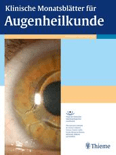
KLINISCHE MONATSBLATTER FUR AUGENHEILKUNDE
Bridging Research and Clinical Practice in Ophthalmology.Klinische Monatshefte für Augenheilkunde is a distinguished peer-reviewed journal published by Georg Thieme Verlag KG, dedicated to advancing knowledge in the field of ophthalmology and general medicine. With an ISSN of 0023-2165 and an E-ISSN of 1439-3999, this journal has been a reputable platform for researchers and clinicians since its inception in 1963, continuing its impactful contributions through to 2024. Recognized in the Q3 quartile for both Medicine (miscellaneous) and Ophthalmology, this journal serves as a vital resource for those involved in ocular health, offering insights into clinical practices, recent advancements, and essential research findings. Despite its traditional publishing model, the journal retains a significant role in the academic community, as evidenced by its current Scopus ranking of #90/137 in the field of Ophthalmology. It is an essential read for professionals and students aiming to stay at the forefront of ophthalmic research and clinical innovations.

INTERNATIONAL OPHTHALMOLOGY
Shaping the Landscape of Ophthalmology Together.International Ophthalmology is a prestigious journal published by Springer, dedicated to advancing the field of ophthalmology through the dissemination of high-quality research and clinical studies. With an ISSN of 0165-5701 and an E-ISSN of 1573-2630, this journal has been a vital resource since its inception in 1978, serving the global community of ophthalmologists, researchers, and healthcare professionals. The journal holds a significant Q2 ranking in the category of ophthalmology and has achieved a commendable position as #56 in Scopus's rankings, placing it within the top tier of its field. Although it does not offer open-access options, articles published in International Ophthalmology are widely cited and respected, playing a crucial role in the ongoing dialogue regarding contemporary ophthalmic practices and innovations. With a broad scope covering all aspects of eye care, this journal is essential for those aiming to keep abreast of the latest developments and research findings that shape the future of vision science and clinical practice.
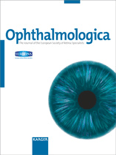
OPHTHALMOLOGICA
Unveiling the Science Behind SightOPHTHALMOLOGICA is a prestigious journal published by KARGER, dedicated to the dynamic field of ophthalmology and its interdisciplinary connections with medicine and sensory systems. With a rich history spanning over a century since its inception in 1899, this journal is esteemed for its high-quality research and impactful contributions, maintaining an impressive Q1 quartile ranking in both ophthalmology and miscellaneous medicine as of 2023, alongside a notable Q2 status in sensory systems. The journal's influence is reinforced by its Scopus rankings, where it ranks 26th out of 137 in ophthalmology, showcasing a strong percentile position of 81. Based in Basel, Switzerland, OPHTHALMOLOGICA serves as an essential platform for researchers, professionals, and students, providing essential insights, reviews, and studies that push the boundaries of knowledge in the vision sciences. Although it does not currently offer open access, its contributions are critical for those pursuing advancements in ocular health and related disciplines.